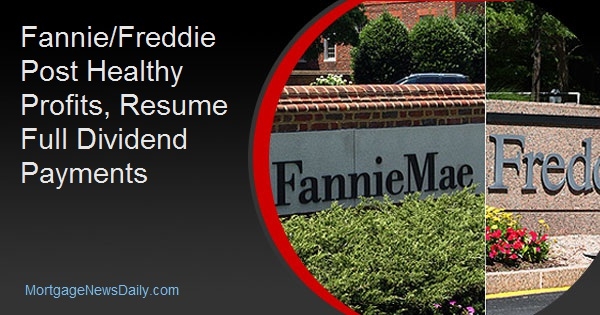Both of the two government sponsored enterprises (GSEs) Fannie Mae and Freddie Mac, which remain in government receivership ten years after the housing crisis, posted strong financial results for the third quarter of this year. Freddie Mac reported net income of $2.7 billion and comprehensive income of $2.6 billion while Fannie Mae's comprehensive and net were both $4.0 billion.
Freddie Mac's results are slightly ahead of those in the second quarter when comprehensive income was $2.4 billion, but down from the $4.6 billion reported in the third quarter of 2017. The company realized $3.3 in net interest income and $728 million in derivative gains.
The company said its results reflected continued strong earnings from guarantee fee income, which rose from $169 billion in the third quarter of 2017 to $209 billion in the recent period. Income from its Multifamily Guarantee Portfolio increased from $184 million to $226 million over the same period and income from its Capital Markets businesses was also stable. The line item for credit losses increased from a provision of ($716) million to a benefit of $380 million.
The company's total guarantee portfolio grew 6 percent to $2.1 trillion. New single-family originations decreased 6 percent to $231 billion but the company funded more than 992,000 single family homes and 551,000 multifamily rental units during the first three-quarter of 2018.
Freddie Mac will pay the entirety of its comprehensive income to the U.S. Treasury as a dividend, after rebuilding the $3 billion buffer it was allowed to build during the first and second quarters. The $2.6 billion payment will bring the total paid the Treasury to $114 billion since being put in conservatorship.
Fannie Mae's comprehensive income was down from the $4.6 billion in the previous quarter but substantially higher than a year earlier when the total was just over $3 billion. However net interest income varied little among the time periods from the $5.4 billion just reported. The company said three-quarters of that income in the third quarter derived from the loans underlying its mortgage-backed securities in consolidated trusts. These primarily generate income through guaranty fees.
The company said it provided $122 billion in liquidity to the single family market in the third quarter. It estimated its market share of new single-family mortgage related securities issuances at 40 percent. It also provided $18.2 billion in multifamily financing during the quarter, covering 206,000 units of housing. More than 90 percent of the units the company financed fell into the category of affordable and workforce housing.
Fannie Mae has transferred a portion of the mortgage credit risk on single-family mortgages with an unpaid principal balance of approximately $1.5 trillion at the time of the transactions since 2013, and approximately 38% of the loans in the company's single-family conventional guaranty book of business were covered by a credit risk transfer transaction as of September 30, 2018.
Fannie Mae will pay $4.0 billion in dividends to the Treasury, resuming the required payment of its total comprehensive income after only a partial payment in the second quarter. This will bring the total paid over the last 10 years to $171.8 billion.







